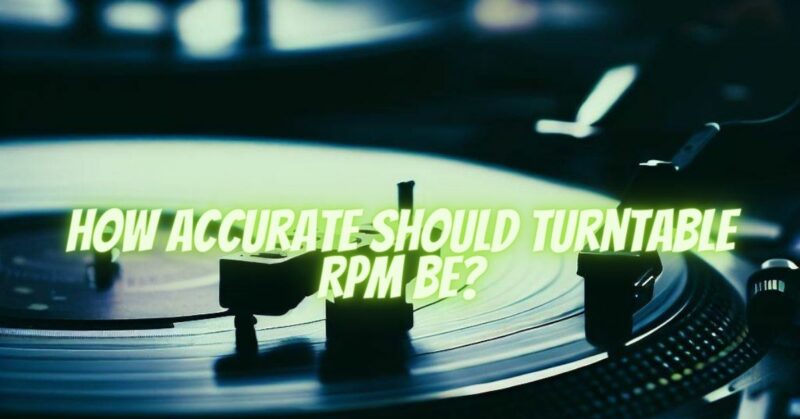Accurate RPM (Revolutions Per Minute) is a crucial factor in achieving optimal sound quality and preserving the integrity of your vinyl records. The speed at which a turntable rotates directly affects the playback pitch, timing, and overall listening experience. In this article, we will delve into the significance of accurate turntable RPM and discuss the recommended tolerances to ensure a faithful reproduction of your vinyl collection.
- Standard Turntable Speeds:
Most turntables offer two standard speed settings: 33 1/3 RPM (revolutions per minute) for LP (long-playing) records and 45 RPM for singles and certain EPs (extended plays). These speeds are widely accepted and used by the majority of vinyl records. It is essential to ensure that your turntable can accurately maintain these speeds to avoid pitch and timing discrepancies during playback.
- Tolerances and Variations:
While precise RPM is desirable, it is important to understand that a minimal degree of variation is inherent in turntable mechanics. The generally accepted tolerances for turntable speed are ±0.3% or better. This means that the actual RPM may slightly fluctuate within this range. Turntables that can maintain speed within tighter tolerances typically provide more accurate audio reproduction.
- Audible Effects of Inaccurate RPM:
Inaccurate turntable speed can have noticeable effects on audio playback. If the RPM is too high, the pitch of the music will be higher than intended, resulting in a faster playback. Conversely, if the RPM is too low, the pitch will be lower, and the playback will sound slower. These speed variations can significantly impact the listening experience, particularly when playing along with other instruments or recordings.
- Tools for RPM Measurement:
To assess the accuracy of your turntable’s RPM, you can use various tools and methods. Stroboscopic discs, smartphone apps, digital tachometers, or dedicated turntable speed meters are commonly employed for measuring RPM. These tools provide visual or numerical feedback, allowing you to determine if the turntable is operating within the acceptable tolerances.
- Calibration and Maintenance:
To ensure accurate RPM, regular calibration and maintenance of your turntable are essential. Follow the manufacturer’s guidelines for calibration procedures, which may involve adjusting the belt tension, motor speed controls, or other mechanisms specific to your turntable model. Keep the turntable clean, free from dust and debris, as these can affect the speed and stability of rotation.
- Professional Calibration:
For utmost precision, professional calibration of your turntable is an option worth considering. A knowledgeable technician can fine-tune the mechanics, motor, and other components of your turntable to achieve highly accurate RPM. This is particularly beneficial for audiophiles or those with high-end turntable setups who seek the utmost fidelity.
Conclusion:
Accurate RPM is vital for maintaining faithful audio reproduction and preserving the intended sound quality of your vinyl records. While a minimal degree of variation is normal, it is recommended to strive for turntables that operate within ±0.3% or better tolerances. Regular calibration, maintenance, and the use of appropriate measurement tools can help ensure the RPM accuracy of your turntable. By paying attention to turntable speed, you can enhance your vinyl listening experience and enjoy the full beauty of your record collection.

